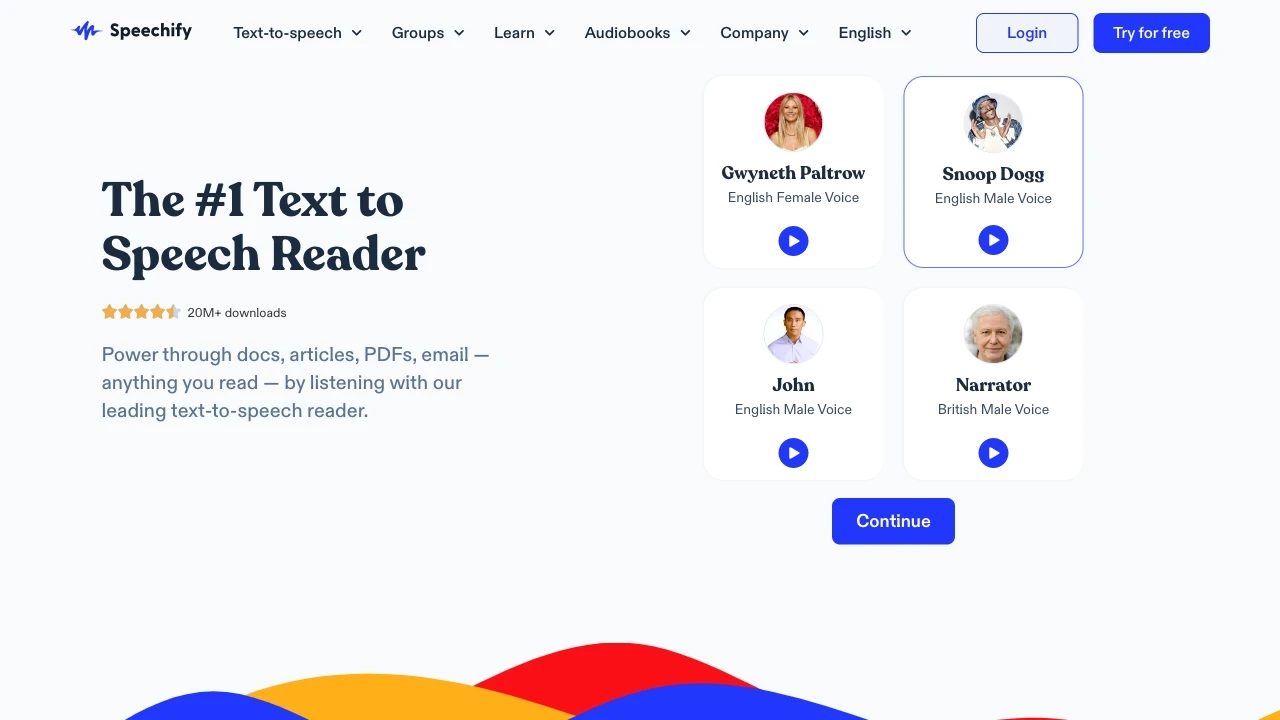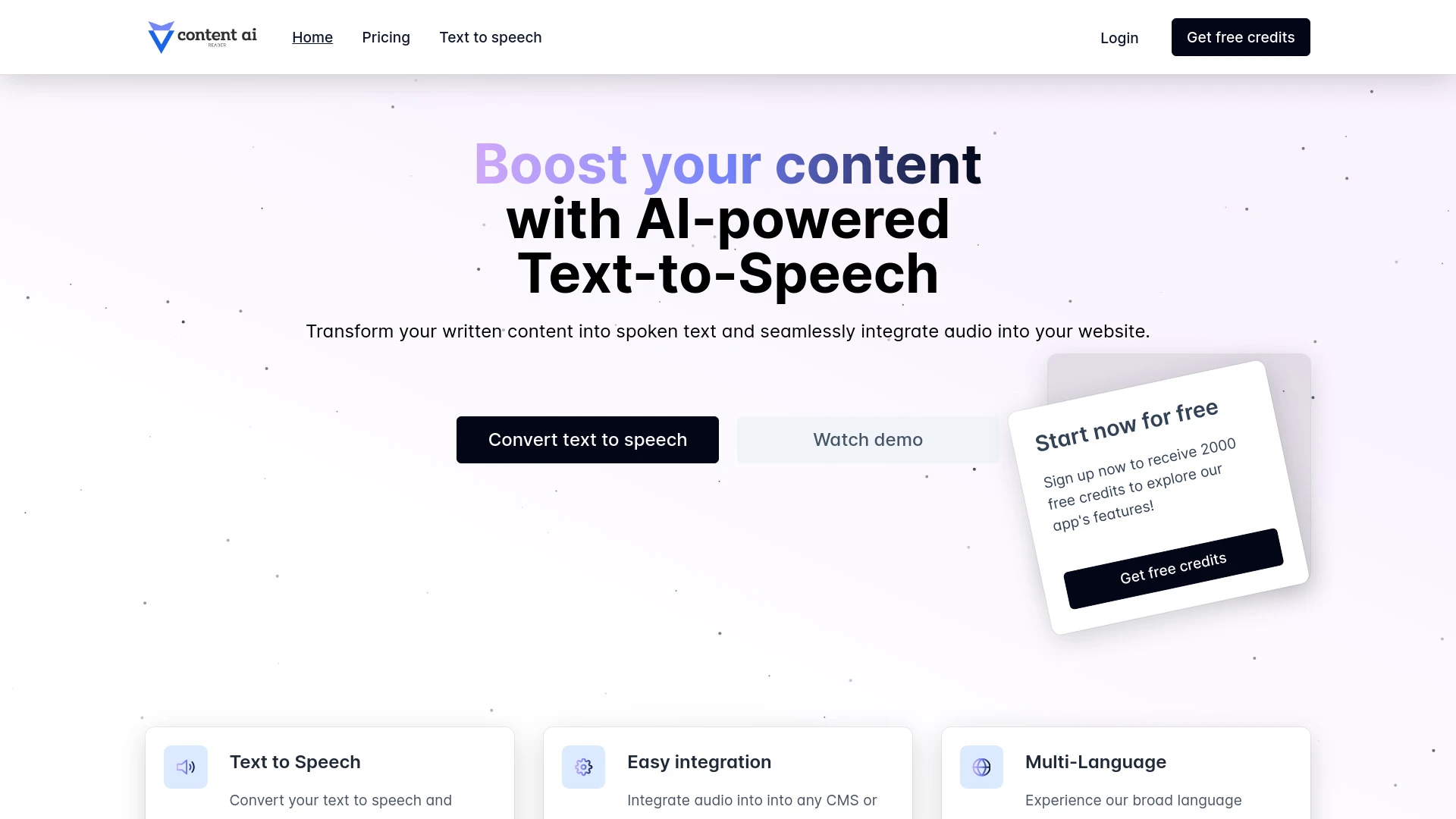Speechify versus Content AI Reader
Speechify, launched in 2018 by Aiden O'Brien, focuses on text-to-speech technology for individuals seeking enhanced reading experiences, including students and professionals. Content AI Reader, introduced by Grammarly in 2020, targets content creators and businesses, emphasizing AI-assisted reading and comprehension tools. Both cater to distinct user needs in the digital reading landscape.


Speechify
Ideal For
Individuals: Enhance reading and comprehension
Education: Support for students with disabilities
Business: Streamline communication with voice-overs
Content creation: Generate audio for videos
Key Strengths
Easy to use
Accessible on multiple platforms
Enhances learning capabilities
Core Features
Text-to-speech
Online listening
Chrome extension
Mobile apps
Voice Cloning
Content AI Reader
Ideal For
Transform blog posts and articles into engaging audio formats
Provide audio versions of news articles for better accessibility
Enhance user experience on educational platforms
Generate audio content for e-commerce product descriptions
Key Strengths
Boosts website accessibility
Enhances engagement with audio content
Supports multiple languages
Core Features
Text-to-speech conversion
Easy integration into various platforms
Multi-language support
Dynamic voiceover for content
Popularity
At a Glance
Speechify excels in speed and voice variety, ideal for multitaskers and users needing quick content absorption. Content AI Reader offers robust customization and intricate features, catering to in-depth study and detailed analysis. Pros of Speechify: fast, diverse voices. Cons: limited customization. Pros of Content AI Reader: thorough features, high customization. Cons: slower speed. Recommendation: Choose Speechify for quick consumption and Content AI Reader for detailed study.